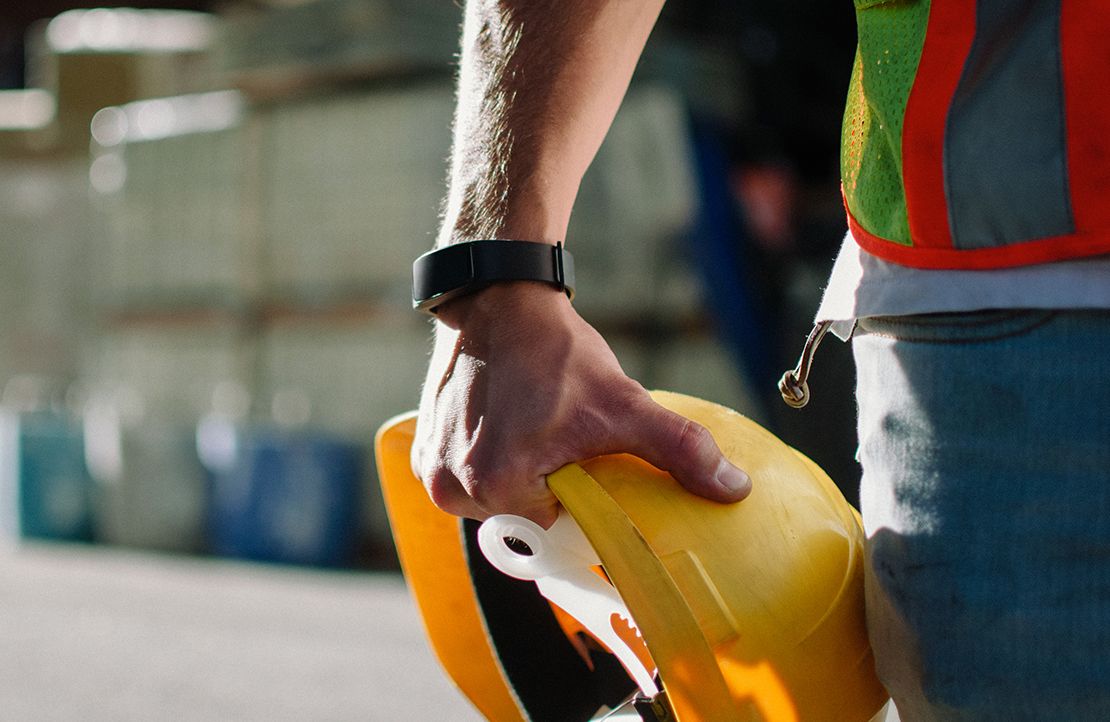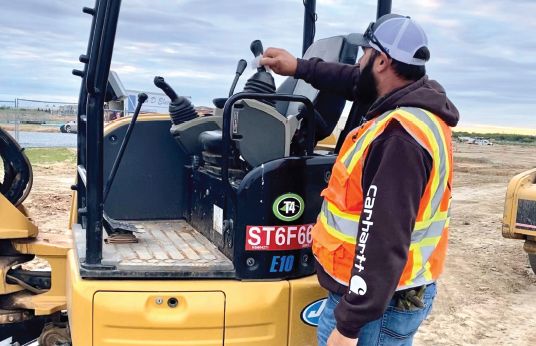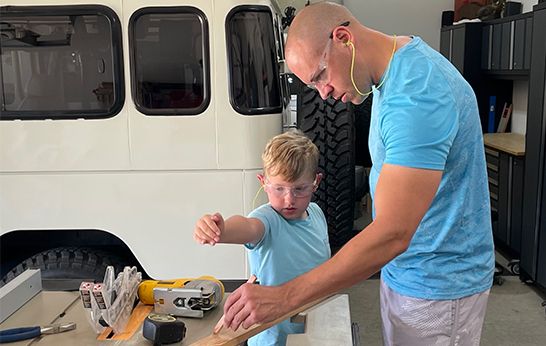

Sign In
Welcome! Sign In to personalize your Cat.com experience
If you already have an existing account with another Cat App, you can use the same account to sign in here
Register Now
One Account. All of Cat.
Your Caterpillar account is the single account you use to log in to select services and applications we offer. Shop for parts and machines online, manage your fleet, go mobile, and more.
Account Information
Site Settings
Security
Road Trip Safety: Steps Before and During Every Trip
Whether you're getting behind the controls of a Cat machine or the family SUV, safety matters. Here's how to apply some simple worksite safety practices to your next road trip — so you can enjoy the journey without worries.
By Caterpillar | Posted: November 19 , 2021 | Revised: May 12, 2022
When you're getting ready to go on a family road trip, you want to keep everyone safe. That's also true on jobsites before starting a shift. Whether you're getting behind the wheel of an RV or a Cat® 797 Mining Truck, it's important to prepare yourself, your equipment and those around you for what's ahead.
Start With a Road Trip Safety Briefing
On a jobsite, safety briefings are done before every shift. You should do the same before leaving on a road trip. Our S.A.F.E. 4-step process is a good place to start.
Here's how to apply that process to your next road trip:
1. Check for risks and hazards
Before you leave for your trip, look into the weather conditions along your route. This practice can help you prepare for any low-visibility weather like fog, heavy rain, or snow. If your trip lasts for a few weeks, continue to check the radar and the weather report while you're out, as severe weather may require you to stay put until the roads are safe again.
2. Inspect your vehicle
In the heavy equipment industry, inspections are essential to keeping up with schedules and improving safety. The same rule applies when you're on a road trip. Inspecting your vehicle before you leave is the best way to catch any mechanical issues or potential problems before you're in an unfamiliar place without a nearby mechanic.
Vehicle inspections should include your:
- Battery
- Brakes
- Tires
- Fluids, like coolant and transmission
- Lights
- Wipers
- Air conditioning
- Various other parts, like the steering wheel and shocks
If you have experience working with vehicles, your pre-trip inspection can be a DIY project. Otherwise, we recommend going to a local mechanic who can handle the process for you.
There are some basic processes you can handle even if you're not well-versed in cars. Make sure your tires have the correct air pressure and clean your windows and mirrors to ensure excellent visibility as you drive.
3. Pack a roadside car emergency kit
You should always carry the gear you need, whether you're part of a construction crew or a family heading on a road trip. Your car emergency kit should prepare you for bad weather and other events on the road. We recommend packing these emergency items for car travel:
- A spare tire, jack, and wheel wrench
- A flashlight and batteries
- Jumper cables
- Reflective materials
- First aid items
- Weather-appropriate tools
- Blankets
- Water and nonperishable foods
- Cell phone car charger
In addition to your safety gear, make sure you have contacts for your insurance and towing company.
4. Plan for emergencies on the road
When it comes to safety, planning for emergencies helps you act with intention. Pack an emergency kit that can support you through several different scenarios and know how to use every item.
When something does go wrong, have a plan for getting to safety and calling for help. For example, if you blow a tire on the highway, be prepared to replace it with the spare or call a local garage. You may even choose to use roadside assistance through your insurance company. Packing a phone charger and a portable power bank ensures you have the battery to make these calls.
More Road Trip Safety Tips
- Wear seat belts and properly secure children in car seats. Regardless of the severity of a car accident, driving or riding unbelted can lead to more severe injuries. When you and your passengers are firmly held in place by the appropriate safety restraints, you eliminate more severe dangers such as being ejected from the vehicle. Wearing seat belts is one of the most effective ways to save lives and reduce injuries in a crash, according to the CDC.
- Maintain strong road visibility and be aware of your blind spots. Whether you're driving a 797 mining truck or a family RV, awareness of your surroundings is always important. Help the drivers around you by using your signals when you turn and merge.
- Minimize distractions. The CDC reports that distracted driving leads to eight driving-related deaths a day. Behaviors like looking at your phone, rummaging for something in the back seat or taking a call can lead to unfocused driving that causes an accident. Stay focused on the road to stay safe.
- Rest and take breaks. Exhaustion can affect a driver's judgment and alertness, so it's essential to take breaks. Our equipment includes advanced technology that recognizes driver fatigue, but your car won't. You might choose to build breaks into your traveling schedule. Even taking time to stretch your legs can do wonders for your focus. We tell workers to watch for and respond to safety issues, and the same thing applies here — your passengers should keep an eye on your habits. If they notice you seem tired, or that you've pulled a long shift, they should urge you to pull over for a break.
Follow these car safety tips, and your next trip will be both fun and safe. Read more tips and resources for staying safe at home at cat.com/safetyathome.
Related Stories
-
Prioritizing Employee Health and Safety
Jobsite safety should always be a top priority, even beyond the machines. Find out how Cat customers have taken extra precautions to keep their employees healthy during the COVID-19 pandemic.
Learn More -
Tips For Preparing a Business Disaster Plan
A natural disaster disrupts everything from your daily schedule to the ability of your business to continue operations. Read our tips for creating plans and preparing for the worst.
Learn More -
Managing Mental Health Issues in Construction
Michelle Walker is dedicated to addressing mental health issues in the construction industry. Her goal is to provide workers on any jobsite the resources they need.
Learn More -
Developing a Safety Culture at Home
The safest jobsites are those that have a strong safety culture, but what about when those employees go home? Hear from Caterpillar safety expert Justin Ganschow on why employee safety behavior at home matters.
Read Our Safety Culture Q&A






